Special Interview_Pure intellectual curiosity and matching advanced abilities—the strengths underlying a researcher who continues to lead his field
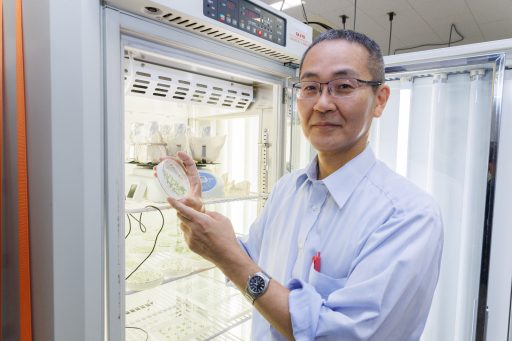
Hitoshi SAKAKIBARA (Ph.D)
Department of Applied Biosciences, Graduate School of Bioagricultural Sciences, Nagoya University
——
Prof. Sakakibara’s research focuses on the mechanism of signal transduction between plant cells, including a plant hormone called cytokinin. Selected as a “Highly Cited Researcher” by Clarivate Analytics every year since 2014, he has been at the forefront of his field. He was decorated with the Medal with Purple Ribbon in November 2023.
——
Prof. Sakakibara loved experiments as a graduate student. He belonged to a laboratory with a free-spirited atmosphere and spent hours immersed in experiments every day. His research supervisor was sincere and open-minded about the results his students produced. He did not talk down to them, and his praises were genuine. Prof. Sakakibara recalls when he told the research supervisor his intention to go on to the doctoral course, although not totally sure of himself. The supervisor simply said: “Oh, yes. You’ve made up your mind. Good.” The supervisor looked very happy, which reassured the student. In 1990, he entered the doctoral course, embarking on a researcher’s journey.
The supervisor, Emeritus Professor Tatsuo Sugiyama of Nagoya University, was a researcher willing to explore new fields. In those days, the Faculty of Agriculture had an unofficial culture of the division of research fields whereby researchers remain in their strictly defined area of specialization. However, Prof. Sugiyama was in favor of freely crossing over the disciplinary boundaries when he felt it was necessary.
“It is hard to make a breakthrough if you stick to your own way, avoiding other areas and technologies you are not familiar with. I am glad I inherited Prof. Sugiyama’s approach, which has turned out to be very positive for me.”
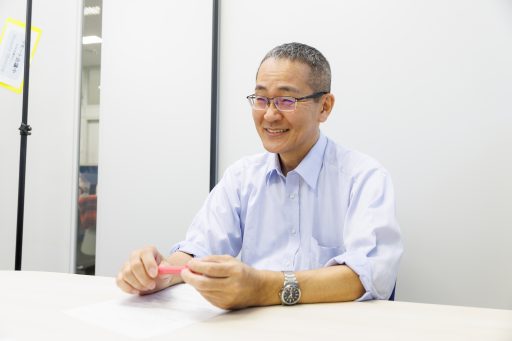
Prof. Sakakibara’s research style, which he developed as a doctoral student, is flexible, involving frankly pursuing what interests him without being constrained by prefixed methods. He has overcome numerous challenges and solved many problems thanks to this style.
● Delving into an unknown territory by combining two areas and approaches
In the late 1990s, the field of gene and genome research blossomed as a result of the accumulation of scientific knowledge and technological advances, triggering fierce competition among researchers. A genome refers to the entirety of all genetic information of an organism, its blueprint of a sort. Genes make up part of this blueprint. (“Genome” is a coined word combining “gene” and “ome,” which means “totality.”) The decoding of genomes and genes had a great impact on the research community, and expectations were high. Prof. Sakakibara discovered several important genes in plant genomes, but in the face of raging competition among scientists all over the world, he felt that such approaches were not enough.
Genetic research can be a powerful tool to learn about living organisms. For this reason, many research projects were conducted, narrowly focusing on the genetic approach and absorbing enormous amounts of intellectual, technological, and human resources. Yet, what happens inside a living organism is extremely intricate and complex. Molecules of varying sizes, created based on the genetic blueprint, undergo numerous chemical reactions to change, develop a form, and maintain themselves. Genetic information alone does not explain many phenomena inside a living organism. Prof. Sakakibara delved into this area of uncertainty. To explain what he did about the plant hormone called cytokinin, for example, compare the two molecules below and look for differences.
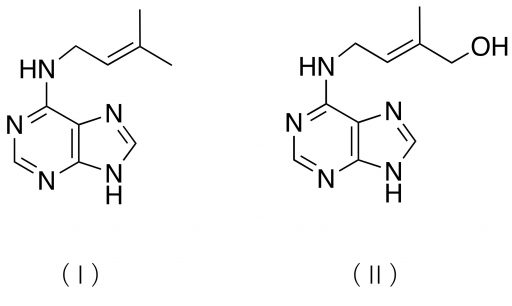
They have only one difference: the presence or absence of “OH” in the upper right corner. This difference is so slight that you might want to call it an error, but the fact is that plants cannot grow normally unless these molecules are produced differently. They are produced in the plant root and signal the absorption of nutrients to the leaves, stems, and flower buds, thus giving the green light for growth. The signaling does not go well without the function of “OH.”
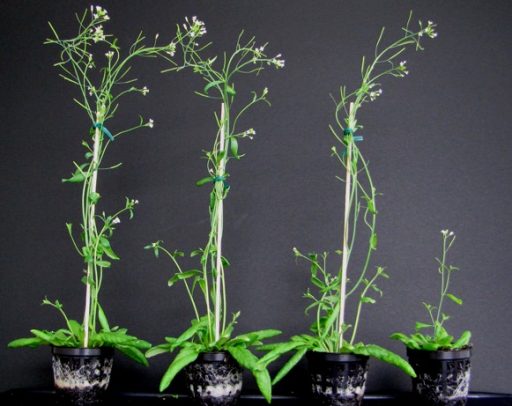
The plants are known to have a gene to produce a protein that serves as a tool to attach “OH.” However, it was impossible to tell which one was the “tool” simply by looking at the genes. Even if the gene for the “OH”-attaching tool protein were identified, that alone would not lead to the elucidation of the mechanism in detail, discovering the specific molecular form and when and where in the body the protein works. Today, the tool protein is known as and named “CYP735A.” Prof. Sakakibara’s research group is credited with both its discovery and the elucidation of its mechanism. This research achievement was possible because the group was able to combine the knowledge of genetics with high-precision chemical analysis.
“In the Department of Agricultural Chemistry, I had already learned the basics of chemical analysis. As a research scientist, I had learned not to be complacent about the results without solid confirmation at the material level. I have been able to stay in a leading position in my field probably because I have been able to combine genetics and chemical analysis well.”
Prof. Sakakibara also thinks that his affiliation with RIKEN at that time greatly helped the development of his chemical analysis method. Full-time specialized technicians at the institute made it easy to accumulate know-how through collaboration. The researchers’ ideas coupled with the technicians’ high-precision skills enabled the birth of a method that was needed at the forefront of research. To illustrate how essential precision is, note that enhancing accuracy with which molecules, such as cytokinin, are extracted and detected leads to the reduction of the quantity of samples needed for experiments. This improvement is highly significant for scientists in the laboratory because cytokinin, although essential for plant growth, is only present in trace amounts, and the preparation of plant samples in large quantities can be difficult if the target plant section is a part of the stem tip. Around the year 2000, plant samples were required for research in the quantities between 10 and 100 grams, whereas by 2009 technical improvement changed the unit of quantity required to 10 to 100 mg.(2) Further improvement is still being made today, reducing the required quantity to 0.1 to 1 mg in some cases.
“I am grateful that RIKEN provided me with the research environment that enabled us to develop a technology that can be properly reproduced by any researchers. We still work with people there, and we still maintain the highest technical standards.”
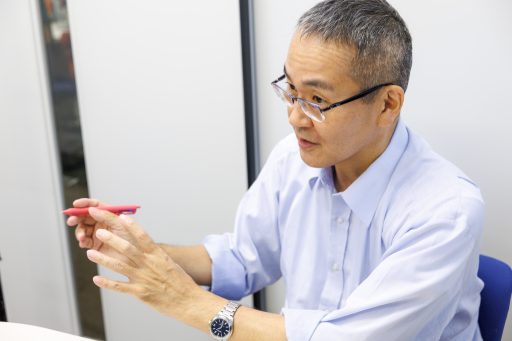
(1)Takatoshi Kiba, Kentaro Takei, Mikiko Kojima, and Hitoshi Sakakibara (2013). Side-Chain Modification of Cytokinins Controls Shoot Growth in Arabidopsis. Developmental Cell, 27: 452-461
(2)Mikiko Kojima, Tomoe Kamada-Nobusada, Hirokazu Komatsu, Kentaro Takei, Takeshi Kuroha, Masaharu Mizutani, Motoyuki Ashikari, Miyako Ueguchi-Tanaka, Makoto Matsuoka, Koji Suzuki, and Hitoshi Sakakibara (2009). Highly Sensitive and High-Throughput Analysis of Plant Hormones Using MS-Probe Modification and Liquid Chromatography–Tandem Mass Spectrometry: An Application for Hormone Profiling in Oryza sativa. Plant & Cell Physiology, 50: 1201–1214
● A paper opened the door to a major discovery—all that has been done so far converged in a moment of déjà-vu.
Prof. Sakakibara explains the fun he experiences doing his research saying, “Cytokinins tell neat stories.” He has read numerous papers related to cytokinins, including ones whose immediate connection to his own research is unclear. He can recall some parts of such papers without even trying, probably because they represent the body of information he has amassed purely out of genuine curiosity. In fact, he launched his research on CYP735A, the tool molecule that attaches “OH,” because he remembered a phenomenon that had previously been reported in only one paper.
“Looking back now, I think it was like a gamble. But I don’t think its success was 100% luck, either.”
Prof. Sakakibara shares with us an impressive episode, a story of a major discovery, a dramatic turnabout that got the paper he jointly wrote with other scientists to be published in Nature in 2007, his first Nature publication.(3)
It concerns a rice mutant named LOG (short for “Lonely Guy”), which was isolated by Dr. Junko Kyozuka (now at Tohoku University), a member of the joint research team. The flower of this mutant has no pistil and has only one stamen. The LOG gene that causes this had been sequenced, but the molecule produced from the LOG gene and its functions were not yet known. The only clue was that the characteristics of the flower bud formation suggested the phenomenon resembled what happens when the cytokinin function is weakened.
Prof. Sakakibara began by searching the database of genes of various organisms for any with a structure similar to that of the LOG gene. There were about 100 hits, sorted in order of similarity from the top. He began going through the list from the bottom for no special reason and immediately felt there was something familiar to him.
Where does this déjà-vu come from? Looking around, his eyes fell on a paper(4) casually placed on the desk. It was a paper about a pathogen that deforms plants with the use of the cytokinin function. The paper described a mysterious gene that works with the cytokinin-producing gene like its partner, without which the pathogen’s cytokinin does not function. He noticed that this “partner” gene had a sequence similar to that of the LOG gene.
“Looking back, I am amazed at the mysterious way human memory and consciousness work. At that crucial moment, I suddenly recalled something that would have been completely forgotten under normal circumstances.”

It completely deviated from the conventionally established theory, but he thought, “This can’t be a mere coincidence.”
“At that moment, we had everything working for us. We had become quite advanced in our analysis technology by then. We combed through the data and reached the conclusion in two weeks. Our paper was accepted as if we had a free pass.”
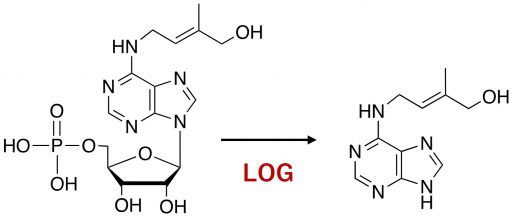
(3)Takashi Kurakawa, Nanae Ueda, Masahiko Maekawa, Kaoru Kobayashi, Mikiko Kojima, Yasuo Nagato, Hitoshi Sakakibara, and Junko Kyozuka (2007). Direct control of shoot meristem activity by a cytokinin-activating enzyme. Nature, 445: 652-655
(4)Marin Crespi, Danny Vereecke, Wim Temmerman, Marc Van Montagu, and Jan Desomer (1994). The fas Operon of Rhodococcus fascians Encodes New Genes Required for Efficient Fasciation of Host Plants. Journal of Bacteriology, 176: 2492-2501
● Vast knowledge and technical expertise that do not allow easy imitation
Prof. Sakakibara’s team continues to lead the field of research on plant hormones, especially cytokinin.
“The information that appears in our papers is only a small fraction of the total body of knowledge we possess. We have already tried everything that we can think of, having that much knowledge. I don’t think it’s easy to close the gap.”
Having undergone fierce competition in genetic research, the team has been making dedicated efforts to improve the chemical analysis method. Prof. Sakakibara says that he no longer feels the intensity of the competition as strongly as before. Nevertheless, he has not slowed down. As soon as he perceives the need for new technology, he avidly works to adopt it by making full use of the network of scientists he has built.
“You can’t make new discoveries without continuously adopting key technologies. Being capable of quick moves is also essential for researchers.”
With pure curiosity at the heart and free from conventional approaches, Prof. Sakakibara continues to explore new research in his flexible style.
(Interview and text by Tatsuro Ayatsuka)
